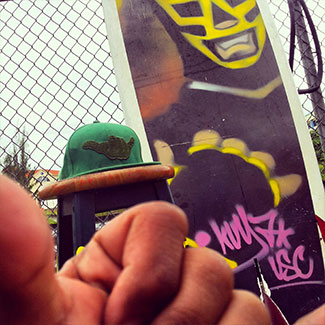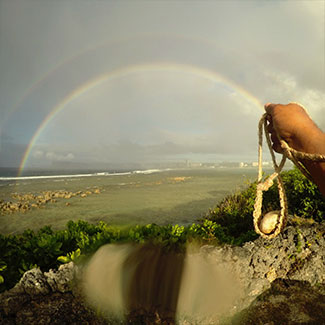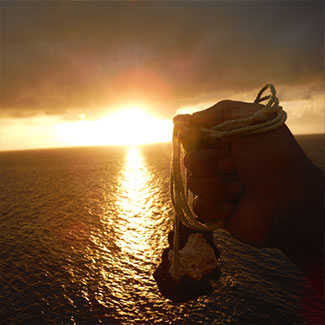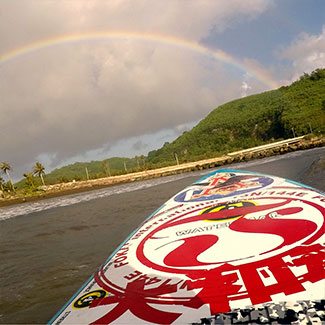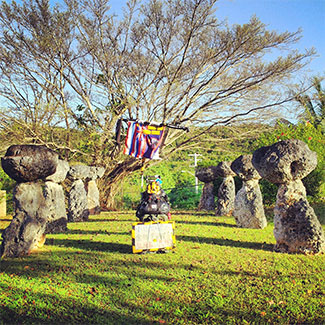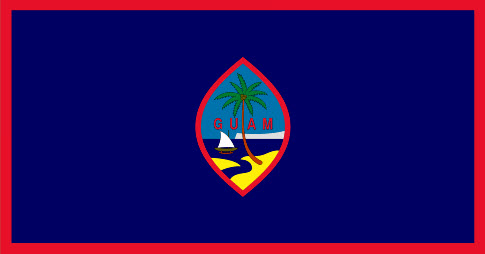Origin Of Slinging And How The Ancient Chamorro People Used It
January 2, 2017 by admin
Filed under Special Forces
Origin Of Slinging And How The Ancient Chamorro People Used It
The sling was one of the first projectile weapons, creatively developed as early as 10,000 B.C. Slingers played a significant role in the Greek, Persian, Roman, and several Mesopotamian armies, and were also considered to be equal to or more better than archers.
However, it is used more expansively in Europe and the Middle East, the evidence of its use can clearly be found all over the world, with the remarkable exclusion of Australia.
There are various Pacific Island and Mediterranean cultures, which easily maintain solid slinging traditions till today through competitions and historical recreations.
The weapon was cheap and extremely easy to make. Vegetable fibers, plant fibers, animal hide, hair, and several other materials could successfully be used for the pouch and cords.
Unlike a bow, which strictly required specialist experience to produce, a sling could be made by anyone. The sling of the late Paleolithic is generally identical to the modern sling because the design is unique.
The main objective of innovation is the payload of the sling. Rivers stones were popular as their polished, smooth surface caused low air resistance angular rocks, which greatly improved the range and accuracy.
In addition, no matter how selectively these were collected, the shape of natural stones literally varies. This also meant the slinger had to compensate for switching projectile weights, reducing total accuracy. At the same time, Near Eastern armies began providing their slingers with uniform projectiles made from carved stone or baked-clay, at the end of the 7th B.C.
Initially, these were spherical, but by 3000 B.C, biconical projectiles were found to be superior. The last two types would orient point first and shoot in the air like a gun bullet or American football.
The signature weapons of the early Chamorro’s, numerous sizes of sling stones were grinded on both sides and forcefully thrown from a sling with great force in combative times. These stones, also called åcho atupak in the indigenous language of Chamorro, were derived through basalt, limestone, or fire-hardened clay and were hung from slings created from coconut fiber, the latter being far better by way of durability.
In historical texts, it is documented that the most successful part of these most oftentimes ovals shaped stones were that ancient Chamorro’s used them with deadly accuracy.
Though commonly related with weaponry of the Latte period, in early colonial history, these stones were used as the arms of resistance to the colonization of Spain, hurled at the harbingers of that particular destruction.
A prized art of warfare, the scope behind the hurling and fashioning of these stones were kept in the men’s domain and were handed over by older males to younger males, usually from father to his son.
The ancient people of Guam used spears and sling stones during war. The sling stones were football like in nature; Chamorro boys are expert throwers because they were trained since when they were very young.
The stones were thrown from a cord sling, the sling stone is fixed in a pocket at the middle of the sling, the stone is shut out by whipping the long cord of the sling.
In the origin of Guam’s sling technology, there are questions that have not been answered satisfactorily. Various archeologists have argued independent development of sling weaponry and possible introduction from the Philippines.
Fortunately, till today in the Philippines or other areas of Southeast Asia, no other technology has been identified. It is much more likely that, conceptually, Melanesia are the introducers of slings and football shaped sling stones.
Bismarck Archipelago would have been the best bet, which are islands located along the northeastern coast of New Guinea, sling stones has been dated to 2000-2300 years ago and 3100 years ago in the Bismarck and Santa Cruz-Reef Island.
Chamorro Slinging | Acho Atupat
May 19, 2016 by admin
Filed under Special Forces
The sling and sling stone have been a part of Chamorro History between 1500 years to 3500 years depending on who you talk to. As a citizen under the only national flag of the world with a sling stone–I’ve been fascinated with slinging for a really long time now. But like most other locals, was happy enough putting it on a pedestal and out of reach. Because it was so iconic for our ancestors and for the Biblical David.
Im pursuing the art for different reasons–Chamorro People Honorification, Culture Sharing, and Versus Goliath.
For every aspect of culture and language that I am slacking on-slinging is something that i can help bring to our people’s table
- Roman DLC
Article By Julian Aguon of Guampedia
Signature Chamorro weapon Åcho’ Atupat
The signature weapon of the ancient Chamorro warrior, slingstones of various sizes were sharpened at both ends and hurled from a sling with deadly force in combative times. These stones, called åcho’ atupat in the indigenous language of Chamorro, were fashioned from either limestone, basalt, or fire-hardened clay and were hung from slings of made of pandanus or coconut fiber, the latter being far better by way of durability.
The most notable aspect of these most oftentimes oval-shaped stones were that ancient Chamorros used them with deadly accuracy as documented in historical texts. Though commonly associated with weaponry of the Latte period, these stones were used in early colonial history as the arms of resistance to Spanish colonization, hurled at the harbingers of that particular destruction. A prized art of warfare, the knowledge of how to fashion and hurl these stones was kept in the men’s domain and was passed down from older to younger males, most likely from father to son, or mother’s oldest brother to son.
Today, the sling-stone shape is part of the design of the official Guam flag and is incorporated into architectural designs. Like the latte the slingstone is a cultural icon used in Guam’s contemporary pop culture (in tattoo and clothing designs) to exhibit Chamorro pride and cultural identity.





